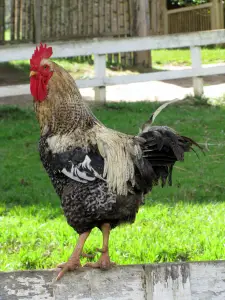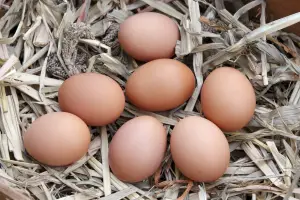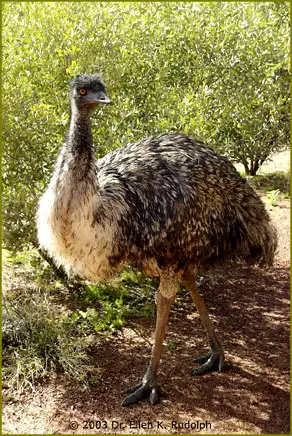Chicken
As a domesticated sub-species of the Red Jungle Fowl, the chicken is one of the most common domestic animals with a population even larger than China! With a global population of 24 billion in just 2003, there are more chickens in the world than any other bird species.
It was previously thought that the chicken was first domesticated in India. However, recent evidence has found that it was already domesticated in Vietnam over 10,000 years ago. The domesticated fowl found its way from India to Lydia, which was the Perianised kingdom in the western part of Asia Minor. Domestic fowls were then imported to Greece by 5th century BC. In Egypt, the fowl has been known since the 18th Dynasty as the “bird that lays every day”. The fowl came to Egypt from Babylonia, according to the annals of Tutmose III.
Chickens are omnivores. In the wild, they eat insects, seeds, lizards, and young mice.
They can live for 5 to 10 years, although depends on what breed the chicken is. The world’s oldest chicken was a hen who died of heart failure at 16 years old. However, in commercial intensive farming, a chicken usually lives for only 6 weeks before it is slaughtered. However, organic and free range chicken meat comes from a 14 week old chicken.
Believe it or not, there are special breeds of hens that lay eggs. They can lay as much as 300 eggs a year! Unfortunately, after 1 year, a hen’s egg-laying ability does decline so they are then slaughtered and used in processed foods. Alternatively, they are sold as “soup hens”.
In natural conditions, birds will only lay when a clutch is complete. When it is complete, she will incubate her eggs. However, there are many domesticated hens that will also do this and go broody. She will sit on her nest and will protest or peck in defense if she is removed or disturbed. She will only leave the nest to dust-bathe, drink, or eat.
When brooding, the nest is at a constant humidity and temperature. Her eggs will also be regularly turned during the first part of incuabtion. The incubation period lasts for about 21 days. If her eggs are fertile, they will hatch. Before they hatch, the mother hen can hear her chicks peeping inside the eggs. She will then cluck to stimulate them to break out of their shells. The chicks then being to ‘pip’, which means that they will peck a breathing hole with its egg tooth at the blunt side of the egg. The blunt side of the egg is on the top. Once this is done, the chicken will rest for a few hours to absorb the remaining egg yolk and withdrawing the blood supply from the membrane that was earlier used for breathing through the shell. The chicken the enlarges the hole and gradually turn around as it goes before cutting off the egg shell’s blunt end to make a lid. Crawling out of its shell, the chick will dry down in the nest’s warmth.
A mother hen will sit on the nest for a further 2 day after the first egg hatches. She will lose interest in any egg that has not hatched, and leave it in the nest. As for her new born chicks, she will fiercly guard them to keep them warm and lead them water and food. However, she will not feed them directly. She cares for them for a few weeks, until she will lose interest and start to lay more eggs.





